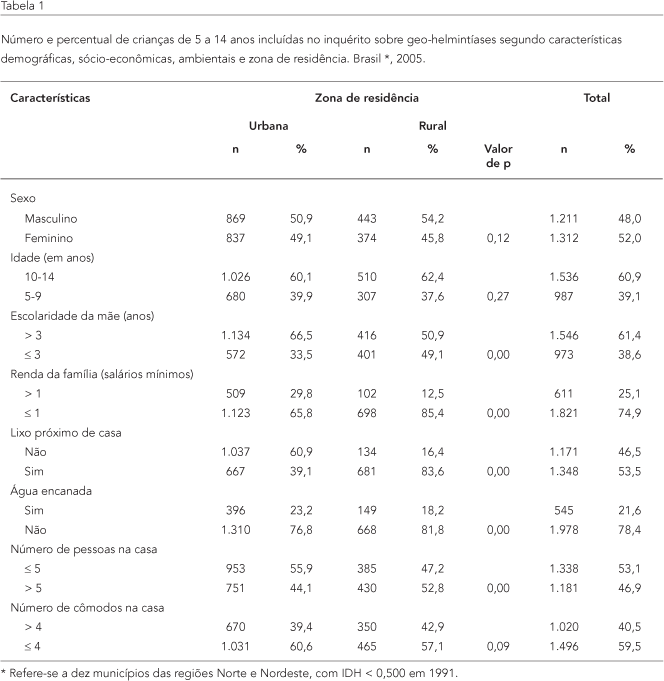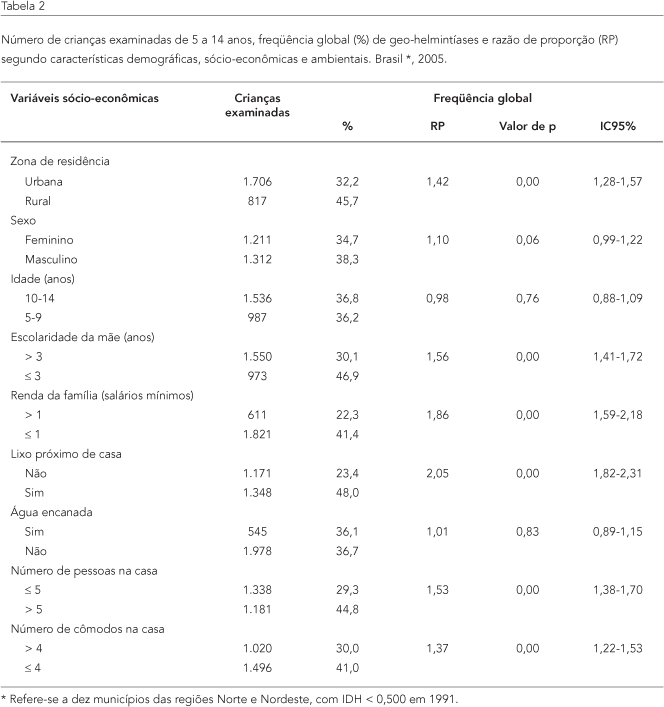Stool surveys were conducted to estimate the prevalence and identify risk factors for geohelminth infections among children in ten Brazilian municipalities with low human development indices (HDI). Socioeconomic and environmental data were obtained from the children's parents or guardians, and stool samples were examined. The proportion of geohelminth infections according to target variables was calculated. Risk factors were evaluated using multilevel logistic regression. Of the 2,523 children, 36.5% were infected with one or more geohelminths (Ascaris lumbricoides, 25.1%; hookworm, 15.3%; Trichuris trichiura, 12.2%). Overall prevalence of geohelminth infections was 45.7% in rural areas and 32.2% in urban areas. Low family income (OR = 1.75; 1.38-2.23), low maternal schooling (OR = 1.69; 1.39-2.06), presence of garbage near the home (OR = 1.50; 1.22-1.84), and number of individuals in the household (OR = 1.41; 1.17-1.71) were associated with infection. In conclusion, geohelminth infections were closely related to socioeconomic conditions, thus emphasizing the importance of targeted public interventions to improve living conditions as part of sustainable prevention.
Helminthiasis; Parasitic Diseases; Child



